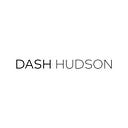How to Align Your Paid and Organic Social Media Strategy for 2020
[Originally published on the Dash Hudson blog.]
What if you could drastically improve the performance of paid social using easy-to-digest, data-backed, organic insights? Now you can, and it’s easier than ever.
Paid and organic teams can often be found on different floors, in different offices altogether, or what might seem like different planets sometimes. This isn’t surprising given that these teams are typically in different departments, with paid teams sitting under digital or e-commerce, while organic social are part of the furniture in the marketing department.
But it’s not just organizational structure that perpetuates these siloes. Paid and organic social are usually fulfilling different objectives, measuring success in different ways, and have entirely different processes.
The Teams
Paid teams are held accountable to revenue. From metrics like CPC, CAC and CTR, down to inventory optimization, and of course the dollars they’re bringing in. The approach leans more towards science than art, with the intricacies of targeting and retargeting, fulfillment capacity, and forever-fluctuating operating costs needing constant attention. Paid teams are optimization whiz kids, focused on objective and revenue-based results.
Organic teams are traditionally all about growth, engagement, brand building, and storytelling. It’s up to them to develop brand awareness and recognition, stand out from the crowd, constantly improve engagement while growing an engaged audience, and to be always-on when it comes to community management. Organic teams know their audience and have a pulse on their tastes and preferences. They understand the impact of photos and videos to the deepest level, and are focused on the objective, subjective, and everything in-between.
The Power of Knowledge Sharing
One team’s insight is another team’s breakthrough. The organic social team comes from a world where engagement rules. Engagement is a key focus and plays a big part in where your brand’s content will rank in the feed. The organic team has been experimenting, learning, refining and improving over time, getting to know their audience a little better with every post. They know how to stop the scroll.
Stopping the scroll is paramount when it comes to paid. Impressions don’t mean money in the bank. This means that paid content must be equally, if not more, engaging than your top-performing organic content. Sharing the knowledge of what works and what doesn’t work between these two departments can drastically improve results.
Data-Backed Creative Genius
The followers you have on Instagram are your most discerning audience. Chances are they’re a fairly diverse bunch, who probably look a lot like the new audiences you’re targeting through paid campaigns, which makes them a great source of insight when it comes to optimizing your creative for paid social.
Dash Hudson’s Vision analyzes your brand’s photos and your audiences’ engagement with those photos. Using computer vision and machine learning, Vision builds brand-specific prediction models for your photos — yes, totally unique to your brand and your audience. This means that Vision can tell you what will and won’t work before you post it. No more guessing. 🔮
There’s a lot to be said for gut instinct and creative acumen, but the savviest brands are using Vision to help them make data-backed decisions when it comes to choosing from hundreds of potential campaign images. Bringing this organic insight into your paid content selection process empowers you to create more meaningful interactions between you and your target audience.
Bringing this insight into your paid strategy will not only improve results, it will also build strength in your brand’s social presence. Imagine that every single piece of content you put in front of your audience is content that they actually care about and love, regardless of whether it’s organic or paid. Brand recognition and sentiment could go through the roof if, at every touchpoint, you’re sharing content that is relevant and exactly what your audience wants to see, engage with, and shop.
Putting Vision to the Test
We love testing our products, and we’re lucky to work with some brilliant partners who are innovators in their fields.
REVOLVE is an e-commerce leader and total powerhouse when it comes to integrated marketing. Through testing campaign images that were selected by Vision against control images that were chosen by the brand, we were able to put this technology through its paces, and the results speak for themselves. REVOLVE saw an increase of 70% return on ad spend (ROAS) from Vision selected imagery. Check out the full case study here.
Statement jewelry brand Kendra Scott knows its audience well. The team understands the importance of fostering deeper engagements through choosing the right visuals to build connections and drive sales. Using the same testing method — with one set of images chosen by the brand and another set chosen by Vision — Kendra Scott’s team saw an increase of 14x ROAS and a 25% increase in purchases on-site. Check out the full case study here.
You + Vision
Your audience is creating thousands of data points for you every single day, by choosing to engage or to scroll on. Leveraging this data can not only improve organic performance, but has the potential to revolutionize paid social too.
By taking the guesswork out of image selection, you can speed up the planning process, shorten the testing phase, and save money on testing creative since you’re putting your best content forward.
Header image: Warner Bros. Entertainment
Want to become a DH fam member? Click here to get a demo!
